The Fairey Seafox was designed and built by Fairey Aviation to be catapulted from light cruisers. It entered service in 1937 and stayed active until 1943 with just 66 produced, in service with 11 naval air squadrons. This biplane was powered as pet an admiralty request by the air-cooled Napier Rapier H engine, and was used both for observation and artillery spotting. Among others it played an important role during the battle of Rio de la Plata between Sturdee’s cruisers and KMS Grav Von Spee and from HMS Emerald, Neptune, Orion, Ajax, Arethusa and Penelope, plus the MACs HMS Pretoria Castle, Asturias and Alcantara.
Design development
In response to the terms a Specification Air Ministry Specification S.I 1/32 for the Royal Navy (the latter did not have the right to publish such specs for aircraft) about a catapult-launched model from battleships at first, later to Cruisers. Fairey applied for the specification and presented a two-seat biplane floatplane, based on previous designs.
The pilot was placed in an open cockpit behind a windshield, however the observer-gunner, open in the first prototype, was in a rear enclosed cockpit on the second, which was a novelty, adopted for production.
The underbelly was modified and reinforced to ensure proper launching from a catapult and the upper wings received additional bracing for lifting the plane back up with a cargo crane. The monocoque fuselage was all metal, while the wings were covered with canvas.
The model first flew on 27 May 1936 but based on the design already in January 1936, Fairey was awarded the contract, at first for 49 aircraft named “Seafox”.
The first prototype flew in Hamble in May 1936 and showed already issues with this engine. The second prototype, with the enclose rear coskpit also had a wheeled undercarriage, and took off on November 5, 1936, but was converted into a floatplane afterwards. By September 1936 the order was extended to 15 more aircraft for a total of 66. The 64 were produced quickly, with the first out in 1937, first entering service with the 700 Naval Air Squadron of the Fleet Air Arm, making 66 with the two prototypes. The model was not considered very successful and no further evolution was done.
General conception
The fuselage was of all-metal monocoque construction. The aft part was made of metal longerons covered by fabric, with a metal back. The wings were made of metal spars and ribs covered with fabric, whereas this was full metal on the leading edge. The wings were attached between themselves with two sets of “H” struts each, plus the usual ailerons struts. They were attached to the fuselage with two “V” struts and two poles. The floats were attached to the wings and fuselage by two sets of “W” type struts. The wings had a light dihedral and were symmetrical top to bottom. Both them and the tailwings were of a relatively squarish, straight design.
Engine
The Seafox was originally designed for a 500 hp Bristol Aquila radial engine. This was a sturdy and reliable model, but the admiralty wanted to impose instead an inline engine, con,sidered more appropriate to greater speeds and were considered more advanced. Therefore they imposed the Napier Rapier, a 16-cylinder air-cooled H-engine which was rated for 395 hp.
This was the Rapier VI (E106) which had a decreased supercharging:
-Maximum rating of 295 kW at 4,000 rpm and at 6,000 ft (1,829 m).
-It had a normal rating of 370 hp (276 kW) at 3,650 rpm and 4,750 ft (1,448 m).
-Its takeoff rating was 365 hp (272 kW) at 3,500 rpm and at sea level.
-Fuel consumption at cruise speed was circa .412 lb/hp/hr (251 g/kW/h) at 310 hp (231 kW), 3,500 rpm.
-The engine itself was 56.6 in (1.44 m) long andn 22.4 in (.57 m) wide, 36.0 in (.91 m) tall.
-The engine weighted 713 lb (313 kg).
It was first installed in the Fairey Seafox but early issues were experienced with engine cooling. Despite of this, this the larged use of this model, some seeing used also on the projected Blackburn H.S.T.10 transport in 1936.
Restrospectively, the admiralty decision to go with this engine was a bad one: The limited power meant the Seafox only cruised at 106 mph (171 km/h) and needed time to go on location, and made an easy prey otherwise, and it had a limited range of 440 mi (710 km), divided by two for a return trip. The Seafox in general handled in the air, and at sea, but it was criticised for being underpowered, had a poor cooling (overheating quite a lot), but also higher landing speed that desired.
Armament
The Seafox was not an offensive model and given its weak engine, could only carrying defensive armament, and exceptionally some extra payload under the wings:
For Machine-guns it had a single 0.303 in (7.7 mm) Vickers light machine gun on a flexible mount for the observer.
For Bombs: It carried two under-wing racks, each able to carry a single 100 lb (45 kg) bomb, and eight × 20 lb (9.1 kg) incendiary bombs.
Production
Production Seafox started to roll off the assembly line in 1937 with deliveries starting from 23 April (K8569 à K8617 et L4519 à L4533). Deliveries stopped with the last delivered in 1938 (unknown date). Catapult tests were carried out by the British Aviation Research Institute, and at sea from HMS Neptune in the Strait of Gibraltar.
Specifications Seal Mark I |
|
| Crew: | 3: Pilot, Gunner, Observer |
| Dimensions: | 33 ft 8 in x 45 ft 9 in x 12 ft 9 in (10.26 m x 13.94 m x 3.89 m) |
| Wing area: | 443.5 sq ft (41.20 m2) |
| Weight: Light | 6,000 lb (2,722 kg) |
| Propulsion: | Armstrong Siddeley Panther IIA 14-cyl. air-cooled radial 525 hp (391 kW) |
| Performances: | Top speed: 138 mph (222 km/h, 120 kn) Service ceiling: 17,000 ft (5,200 m) Rate of climb: 5,000 ft (1,524 m) in 5 minutes 20 seconds |
| Endurance: | 2 hours 30 minutes |
| Armament – MGs | 1x .303 cal (7.7 mm) aft |
| Armament – Bombs | 316 lb (160 kg) |
Royal Navy service
All units were complete in late 1938. They served with the 700, 702, 703, 713, 714, 716, 718, 754, 764, 765, 773 Naval Air Squadrons. Each corresponded to a single ship, with usually three planes, one anboard, one reserve, and one for training. Some had shared planes. Training Squadrons were 753 et 754.
At the beginning of WWII, the Fleet Air Arm sent fifty Seafoxes on the armed merchant cruisers Orion and Pretoria Castle (later converted as an aircraft carrier), Asturias, and Alcantara.
Also on the light cruisers of the Arethusa class, Arethusa and Penelope, the Leander class HMS Ajax, and the older Emerald.
Catapult Flight maintained one or two planes on board in the 3rd cruiser squadron of the Mediterranean and the 9th cruiser squadron and South American Division (South Atlantic Command).
At the start of the conflict, 32 Seafox were at sea with the Royal Navy, Royal Australian Navy and New Zealand Division of the Royal Navy. Seafoxes were not only used by Fleet Air Arm, but the RAN and RNZN, and only these. However some sources report them used by Belgium and Peru, but it is likely some confusion with the Fairey Fox. British seafoxes were kept when ships were transferred, or in Royal Australian Navy Service such as H.M.A.S. Perth, H.M.A.S. Sydney and H.M.A.S. Hobart since the start.
Battle of Rio de la Plata

KMS Graf Spee
Soon, it played a in the battle of the Rio de la Plata in December 1939, spotting the German pocket battleship Admiral Graf Spee (Deutschland class) after some scouting and hlping British naval gunners to score many hits. Captain Hans Wilhelm Langsdorff even noted the inability of his AA tpo deal with them during the battle against HMS Exeter, Ajax and Achilles.
Two Seafox were carried, one for HMS Ajax and one for HMS Achilles. Their first use in that pre-radar time, was to search for, and ultimately locate the German pocket battleship Graf Spee which was causing mayhem in the South Atlantic as commerce raider.
The German ship was reported in the estuary of the Rio de Plata river and on December 13, 1939 a fierce fight of several hours followed, during which the two Seafixes remained in the air as long as they could for artillery spotting, ensuring all three cruisers had the upper hand despite all odds. The best cruiser was HMS Exeter with six 8-in guns, versus six 280 mm guns for the Graf Spee. The two light cruisers were armed each with eight 6-in but had to close, which was dangerous in such good weather and calm sea, a textbook naval gunnery setting.
Damaged, Graf Spee was forced to enter Montevideo, Uruguay. And Ajax went on catapulting its Seafox for photo reconnaissance above the Uruguayan arsenal. The observer carried a small camera and the pilot was at low altitude but was forced to face fire from the local AA, neutrality obliged. The Seafox returned with holes of Uruguayan steel. However with the eagerness of the Allied diplomats, KMS Graf Spee was forced to leave on December 17, and famously scuttled at sea, her bruning wrecked being shot by a Seafox from HMS Cumberland, arrived a few hours earlier. Lieutenant Lewin, who spotted the Graf Spee in the first place became the first Fleet Air Arm officer to receive the Victorian Cross in his lifetime. His carrer went on with the Fairey Barracuda.
Some Seafoxes used until …1945
These seaplanes were withdrawn after 1942, some retained for pilot training until withdrawal in turn from July 1943, but the very last in July 1945. They were gradually replaced by the Vought Kingfisher, a great improvement all around. Most of the pilots and observers of Seafox therefore joined the Kingfisher except for some crews of Squadron 753 who subsequently flew on Swordfish. Some Seafoxes of 716 Squadron remained in service until February 1944 for the surveillance of British port installations in the Irish Sea. It was one of these that spotted a U-boat off Liverpool in November 1943, chased by two FAA Avengers and sank after three hours.
Links and resources
Books
“For Light Reconnaissance” (PDF). Flight, 9 December 1937.
Mondey, David. The Hamlyn Concise Guide to British Aircraft of World War II. London; New York: Aerospace Publishing Ltd.
Sturtivant, Ray and Balance, Theo. The Squadrons of the Fleet Air Arm. Tonbridge, Kent, UK: Air Britain (Historians) Ltd.
Taylor, H.A. Fairey Aircraft since 1915. London: Putnam, 1974.
Links
https://en.wikipedia.org/wiki/Fairey_Seafox
http://aviadejavu.ru/Site/Crafts/Craft26189.htm
https://www.militaryfactory.com/aircraft/detail.php?aircraft_id=1386
http://jnpassieux.fr/www/html/Seafox.php
https://www.scalemates.com/topics/topic.php?id=1672
http://www.airwar.ru/enc/sww2/sfox.html
https://encyclopedie-des-armes.com/index.php/aviation/hydravions/1273-fairey-seafox
Kites, Birds & Stuff – FAIREY Aircraft By P.D. Stemp
The model corner

Main query on scalemates.
This model had been covered by Matchbox to 1/72, there was an old kit from CMA at 1/48. 1/72 also for Formaplane, Revell, and even 1:700 for Flyhawk.
See a kit review (in german)
Gallery
Author’s illustrations: Types and liveries
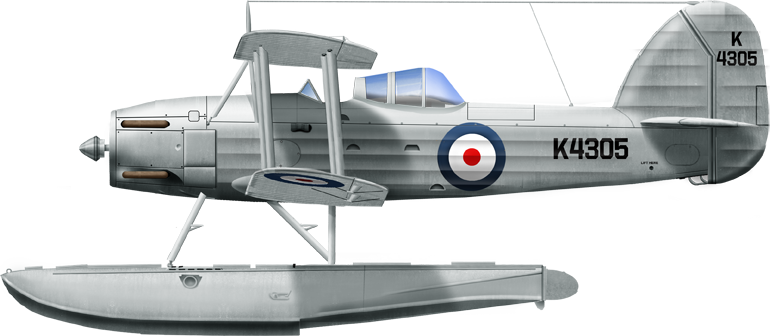
Seafox Mark I of 765 Naval Air Station, Seaplane school Lee-on-Solent, 1939
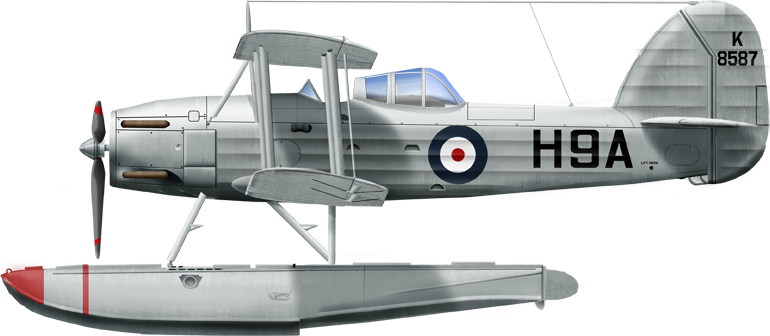
Seafox onboard HMS Arethusa, 713 Catapulted Flight, Kalafrana, Malta 1939
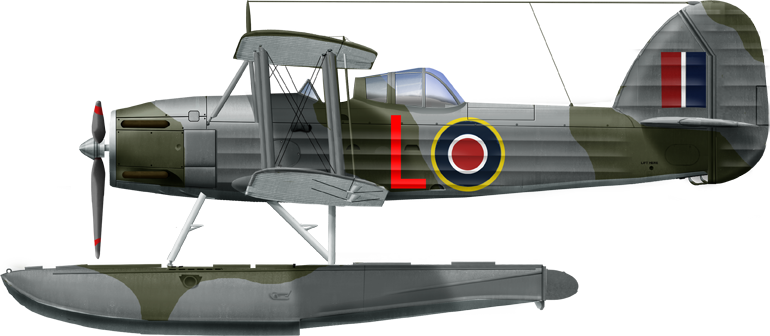
Seafox Mark I from 702 Sqn. FAA, MAC HMS Asturias, 1942
Additional photos
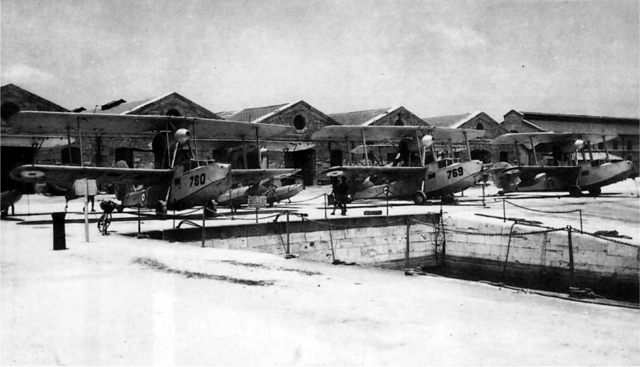
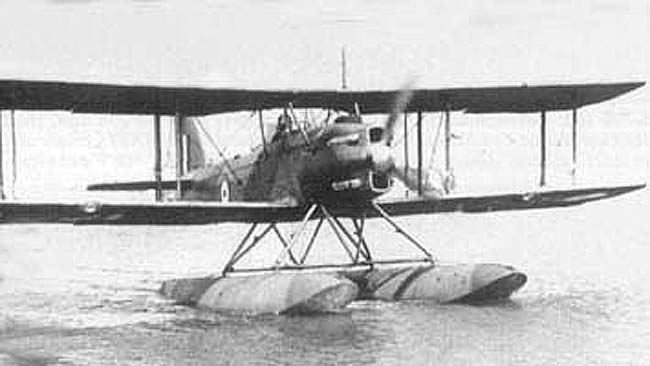
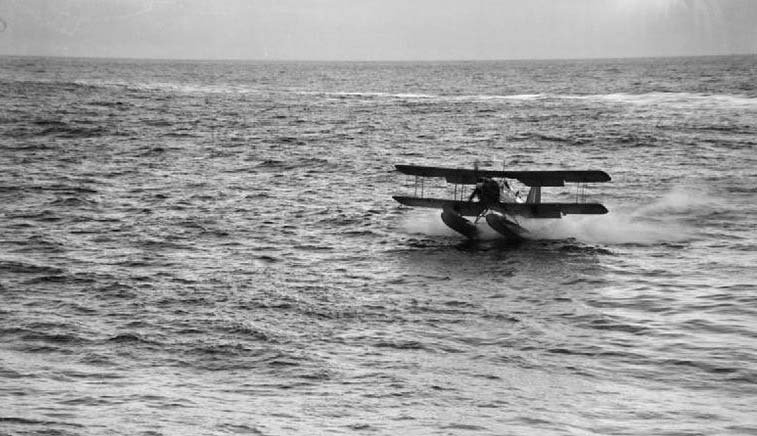
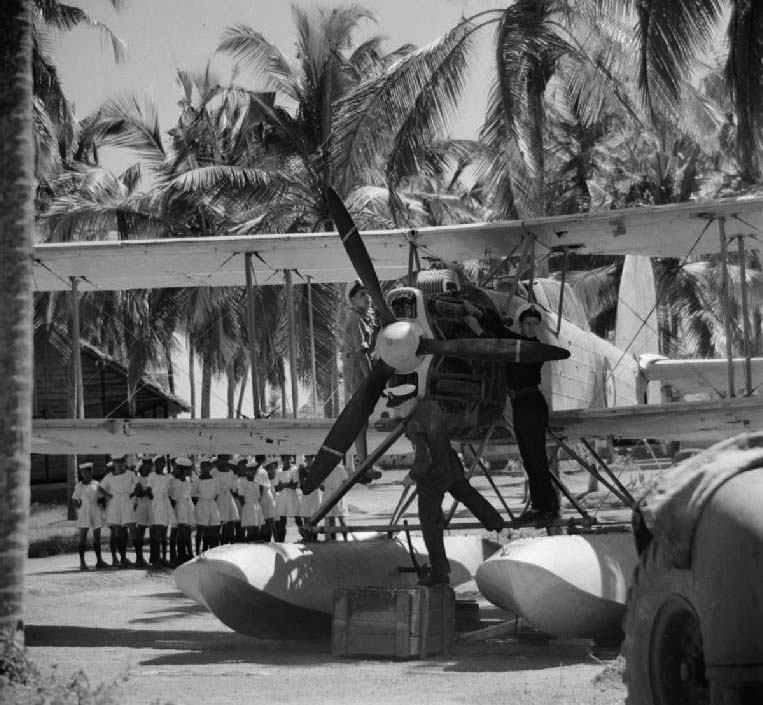

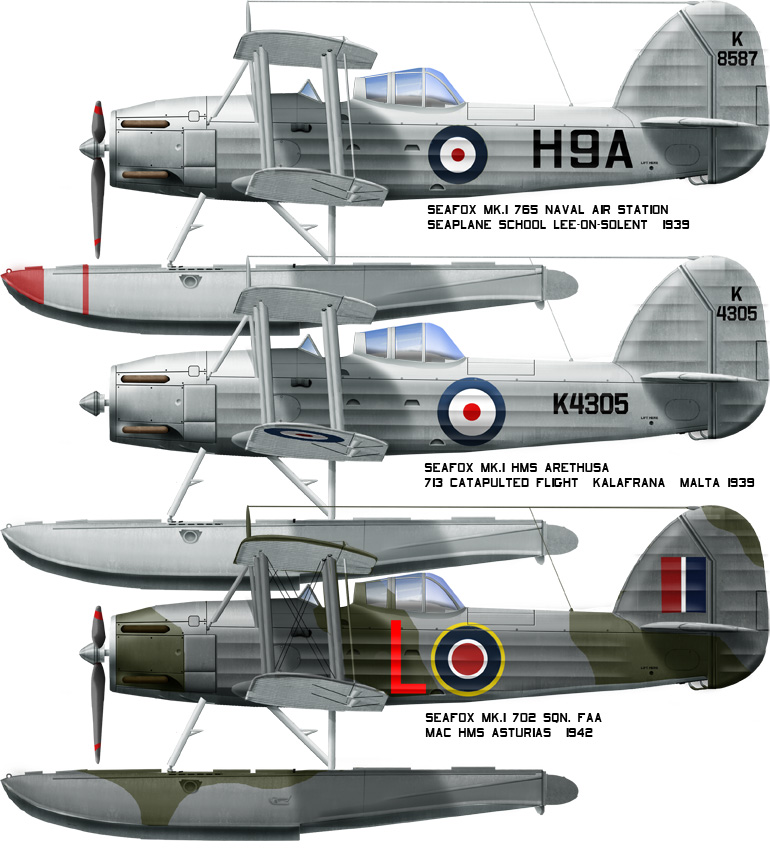

 Latest Facebook Entry -
Latest Facebook Entry -  X(Tweeter) Naval Encyclopedia's deck archive
X(Tweeter) Naval Encyclopedia's deck archive Instagram (@navalencyc)
Instagram (@navalencyc)





 French Navy
French Navy Royal Navy
Royal Navy Russian Navy
Russian Navy Armada Espanola
Armada Espanola Austrian Navy
Austrian Navy K.u.K. Kriegsmarine
K.u.K. Kriegsmarine Dansk Marine
Dansk Marine Nautiko Hellenon
Nautiko Hellenon Koninklije Marine 1870
Koninklije Marine 1870 Marinha do Brasil
Marinha do Brasil Osmanlı Donanması
Osmanlı Donanması Marina Do Peru
Marina Do Peru Marinha do Portugal
Marinha do Portugal Regia Marina 1870
Regia Marina 1870 Nihhon Kaigun 1870
Nihhon Kaigun 1870 Preußische Marine 1870
Preußische Marine 1870 Russkiy Flot 1870
Russkiy Flot 1870 Svenska marinen
Svenska marinen Søværnet
Søværnet Union Navy
Union Navy Confederate Navy
Confederate Navy Armada de Argentina
Armada de Argentina Imperial Chinese Navy
Imperial Chinese Navy Marinha do Portugal
Marinha do Portugal Mexico
Mexico Kaiserliche Marine
Kaiserliche Marine 1898 US Navy
1898 US Navy Sovietskiy Flot
Sovietskiy Flot Royal Canadian Navy
Royal Canadian Navy Royal Australian Navy
Royal Australian Navy RNZN Fleet
RNZN Fleet Chinese Navy 1937
Chinese Navy 1937 Kriegsmarine
Kriegsmarine Chilean Navy
Chilean Navy Danish Navy
Danish Navy Finnish Navy
Finnish Navy Hellenic Navy
Hellenic Navy Polish Navy
Polish Navy Romanian Navy
Romanian Navy Turkish Navy
Turkish Navy Royal Yugoslav Navy
Royal Yugoslav Navy Royal Thai Navy
Royal Thai Navy Minor Navies
Minor Navies Albania
Albania Austria
Austria Belgium
Belgium Columbia
Columbia Costa Rica
Costa Rica Cuba
Cuba Czechoslovakia
Czechoslovakia Dominican Republic
Dominican Republic Haiti
Haiti Hungary
Hungary Honduras
Honduras Estonia
Estonia Iceland
Iceland Eire
Eire Equador
Equador Iran
Iran Iraq
Iraq Latvia
Latvia Liberia
Liberia Lithuania
Lithuania Mandchukuo
Mandchukuo Morocco
Morocco Nicaragua
Nicaragua Persia
Persia San Salvador
San Salvador Sarawak
Sarawak Uruguay
Uruguay Venezuela
Venezuela Zanzibar
Zanzibar Warsaw Pact Navies
Warsaw Pact Navies Bulgaria
Bulgaria Hungary
Hungary

 Bundesmarine
Bundesmarine Dutch Navy
Dutch Navy Hellenic Navy
Hellenic Navy Marina Militare
Marina Militare Yugoslav Navy
Yugoslav Navy Chinese Navy
Chinese Navy Indian Navy
Indian Navy Indonesian Navy
Indonesian Navy JMSDF
JMSDF North Korean Navy
North Korean Navy Pakistani Navy
Pakistani Navy Philippines Navy
Philippines Navy ROKN
ROKN Rep. of Singapore Navy
Rep. of Singapore Navy Taiwanese Navy
Taiwanese Navy IDF Navy
IDF Navy Saudi Navy
Saudi Navy Royal New Zealand Navy
Royal New Zealand Navy Egyptian Navy
Egyptian Navy South African Navy
South African Navy






























 Ukrainian Navy
Ukrainian Navy dbodesign
dbodesign
The translation to English leaves a little to be desired.
Volunteering as proof-reader ? You are welcome !
Like your website.
I think Mr Kingman – Sugars French would not be as good as your English.
Good work.